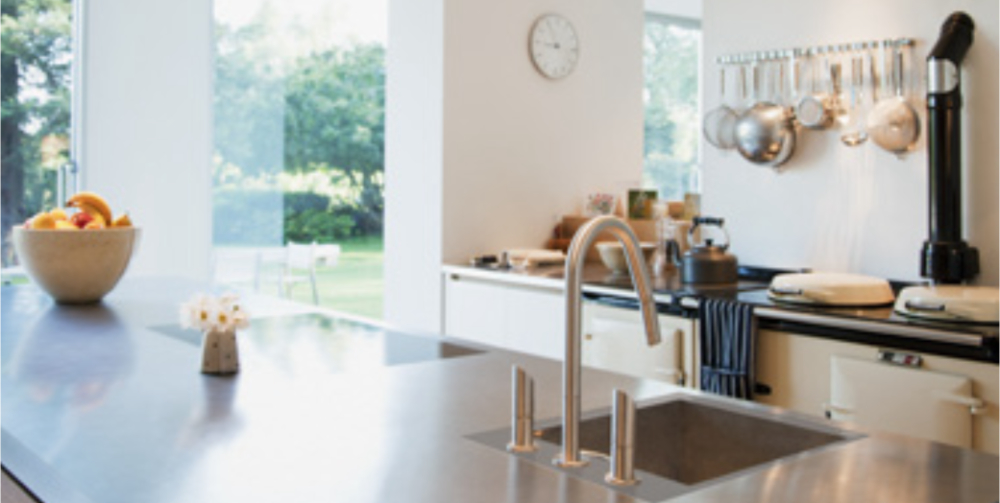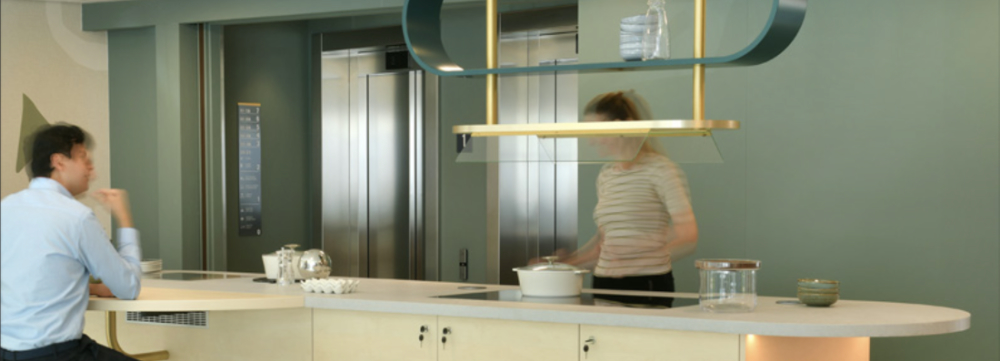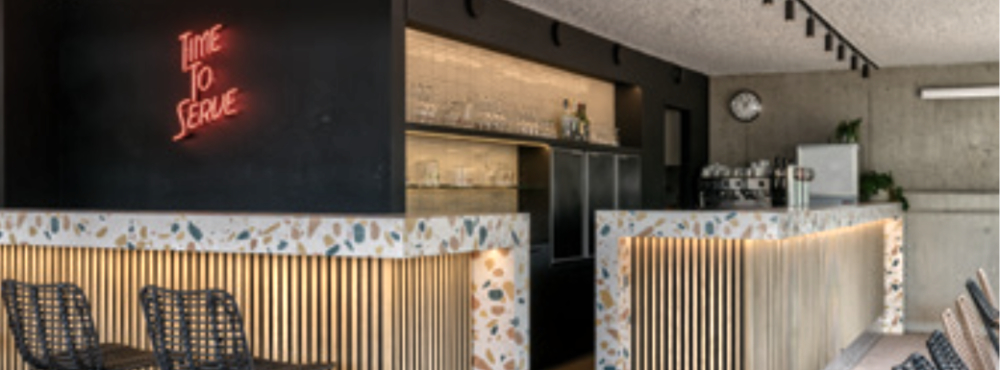Engineered work surfaces
Contents |
[edit] Scratching beneath the surface: a guide to choosing engineered surface for refurbishments
The impact of interior aesthetics and comfort on customer experience is often the driving force behind hotel refurbishment projects led by designers and building specifiers. Wall coverings, doors and surfaces play a key role in delivering the intended aesthetic, but with so many engineered surfaces to choose from, how can specifiers assess suitability for the project?
[edit]
When it comes to refurbishments and new projects, surfaces can be a minefield for interior designers and designers alike with so many different options. The need for speed, ease of maintenance and installation, and desire for full design flexibility has led to engineered surfaces becoming the material of choice for many building specifiers. But with so many options to choose from and important industry regulations to be met, it can be hard to navigate the vast number of choices available.
From wall coverings to doors and worktops, each individual surface plays a significant part in the overall aesthetic of a hotel’s ambiance or décor, not to mention its durability and ease of maintenance. The importance of correct specification is imperative when it comes to major refurbs, with little room for remedial work or error. To assess which engineered surface is right for your project, the specific demands of the environment must be considered. Once these have been clarified, the chosen surface needs to be up to date with the key UK and EU regulations and standards for use in hospitality settings.
[edit] Which surfaces can I choose from?
Choosing the right surface for any given application is key, not least because getting it right first time avoids disappointing customers, incurring costs and disenfranchising installation teams. Choosing the right surface is not just about the look and feel, however, it is also about longevity, durability, compliance and maintenance. The engineered surface choices available are brilliant products for the hospitality industry, offering more than just an alternative to more traditional materials.
For example, for a high traffic application like a reception desk, options include Melamine Faced Boards (MFB), High Pressure Laminate (HPL) bonded to a substrate or compact laminate. MFB may be stylish, cost-effective and quick to source and fit product, but its low-pressure manufacturing process, which typically sees one sheet of paper fixed to a choice of substrate, generally means it struggles to stand up to the rigours of frequent use. HPL bonded boards however, use a high-pressure process which combines the decorative paper with six sheets of kraft paper and a protective overlay which results in a higher surface performance. In turn, this will also, in some instances features an antibacterial coating – perfect for food prep areas or regularly used surfaces in health and hygiene conscious markets.
Compact laminate is another alternative; the ultimate in hard wearing solutions. Boasting increased impact resistance compared to HPL bonded boards, plus the sort of premium finish capable of creating a cohesive and stylish décor from room to room, compact laminate tends to be a popular choice for customer-facing spaces where there’s an opportunity to wow visitors. Due to its solid compact core, compact laminate does not require edging, saving labour and removing any potential damage caused by high traffic areas.
Other examples include considering vanity tops for bathrooms, HPL bonded boards could be a good option here, however usage considerations are important. Whilst this would be the most cost-effective option, it is important to be aware that any water ingress could render the vanity unusable in a few years. Quartz is another option, offering a surface solution but at a considerably higher cost. Compact Laminate here would be the recommendation, hard wearing and waterproof perfect for this scenario, without the costly templating associated with quartz.
With an almost endless list of possible surface types for various situations, navigating the surface scene can at first glance seem complex, which is why experts such as the Polyrey technical and sales supports teams offer assistance with surface specification.
[edit] Which standards do I need to ensure compliance with?
Once a surface has been selected, it is imperative that standards and regulations are complied with. In some instances, this will be a case of best practice, while others will be mandatory. Getting to know the applicable standards and regulations is therefore a crucial part of understanding which engineered surface will be the best to specify. Ultimately, with commercial buildings within the hospitality sector requiring such a wide variety of amenities, surfaces, settings and furnishings, the list of potential regulatory requirements will often be vast so it is always worth checking which specific requirements are in play for a given project. With that said, some of the most frequently encountered regulations include:
[edit] Furniture Industry Research Association (FIRA) standards
The FIRA Gold standard includes assessment and testing of structural performance, safety and stability; ergonomics; finish performance; the effects of moisture, humidity and temperature; flammability; workmanship; even the quality of assembly instructions and installation procedures; plus an initial inspection of the manufacturing premises followed by periodic re-inspections. This product testing standard is accredited by the UK Accreditation Service (UKAS).
[edit] UL Greenguard Certification
Greenguard certification indicates that a product has been tested and certified to meet stringent emissions standards for over 360 volatile organic compounds (VOCs) and chemical emissions. The highest standard of HPL panels are Greenguard Gold rated. All Polyrey HPL panels and compact high pressure laminate worktops are A-rated in this category.
[edit] BREEAM (Building Research Establishment Environmental Assessment Method)
BREEAM is common across many other product categories, this is the leading built environment sustainability assessment method, undertaken by independent licensed assessors using scientifically-based metrics and indices covering a range of environmental issues.
[edit] Building Regulations.
It is extremely important that European building regulations are comprehensively understood by industry professionals to ensure safety standards are complied with. As specific requirements vary between different surface types, a thorough and broad understanding is essential.
[edit] The perfect fit
Having the knowledge of standards and product specification makes the decision process easier. Whether you want surfaces to adorn doors or walls, choosing the right supplier makes all the difference. Regardless of your surface needs, Polyrey has a complementary suite of products to match décor and meet multiple criteria for a co-ordinated approach. At Polyrey, we can help answer all your surface questions, whether it is navigating regulations and standards or matching your next project with the right surface.
This article appears in the AT Journal issue 148, Winter 2023 text and images supplied by George Emms, Sales Leader UK & Ireland – Specification, Polyrey.
--CIAT
[edit] Related articles in Designing Buildings
Featured articles and news
Infrastructure that connect the physical and digital domains.
Harnessing robotics and AI in challenging environments
The key to nuclear decommissioning and fusion engineering.
BSRIA announces Lisa Ashworth as new CEO
Tasked with furthering BSRIA’s impressive growth ambitions.
Public buildings get half a million energy efficiency boost
£557 million to switch to cleaner heating and save on energy.
CIOB launches pre-election manifesto
Outlining potential future policies for the next government.
Grenfell Tower Inquiry announcement
Phase 2 hearings come to a close and the final report due in September.
Progress from Parts L, F and O: A whitepaper, one year on.
A replicated study to understand the opinion of practitioners.
ECA announces new president 2024
Electrical engineer and business leader Stuart Smith.
A distinct type of countryside that should be celebrated.
Should Part O be extended to existing buildings?
EAC brands heatwave adaptation a missed opportunity.
Definition of Statutory in workplace and facilities management
Established by IWFM, BESA, CIBSE and BSRIA.
Tackling the transition from traditional heating systems
59% lack the necessary information and confidence to switch.
The general election and the construction industry
As PM, Rishi Sunak announces July 4 date for an election.
Eco apprenticeships continue help grow green workforce
A year after being recognised at the King's coronation.
Permitted development rights for agricultural buildings
The changes coming into effect as of May 21, 2024.
























